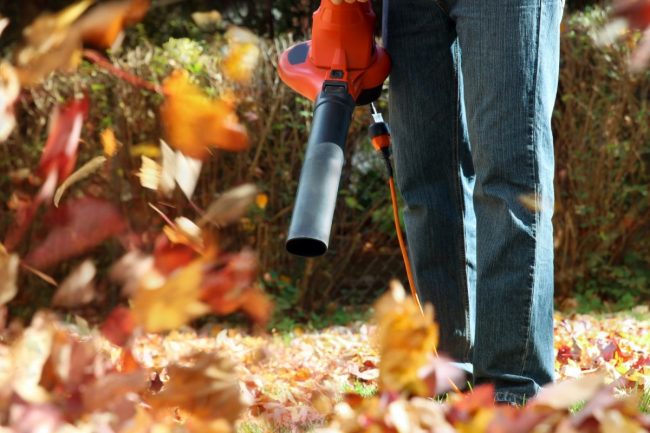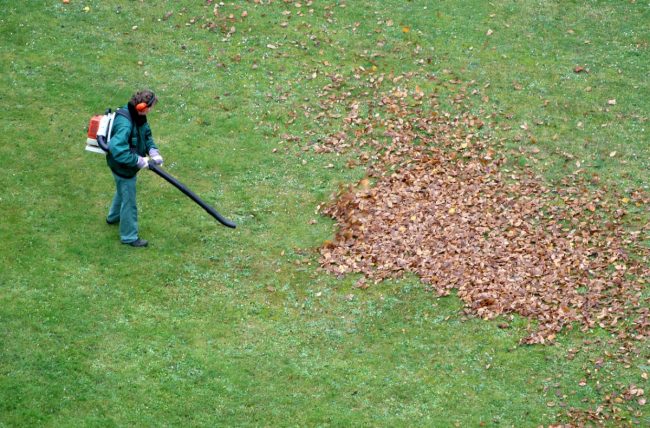How To: Use a Leaf Blower
The temptation is to simply let it rip, but technique and strategy are involved in handling this power tool. Find out how to use a leaf blower properly and minimize the amount of time you spend backtracking.

Photo: istockphoto.com
Fall is full of football, hot apple cider, and pumpkin pies. And leaves. For some, lots and lots of leaves. A leaf blower can make quick work of this autumn chore thanthe traditional rake. But it’s worth brushing up on a few tips from the experts before getting started.
RELATED:15 Tricks to Know If You Hate Fall Yard Work
Choose the right leaf blower for your size yard.
There are plenty of options for leaf blowers on the market, so how does one narrow down the field? Consider the size and shape of your yard, for starters, and how many leaves tend to drop in a season. Small yards or those with light leaf accumulation can get by with less power, perhaps even a cord. Medium to large yards that see more fallen leaves will require more power and can benefit from the free reign afforded by batteries and gas tanks. Just remember: While a larger model may be more powerful, it will probably also be more unwieldy.Our shopping guide to the best leaf blowerssuggests several top-rated options and will help you select the right power tool.
Develop a smart strategy for using a leaf blower.
A leaf blower is most effective for gathering the bulk of a lawn’s leaves into large piles, to be removed with a tarp or by hand. Don’t expect to blow every last leaf off your lawn with a leaf blower. That will drive you crazy. Try hard not to be too fussy. You can follow up with a leaf rake at the end to get the stragglers.
Thevacuum mode of a leaf bloweris best reserved for smaller and less accessible jobs, where a leaf rake would be difficult to use. Use it for leaves that have been trapped around rocks, at the bases of fences, or in the tight spots around your house. It’s also handy for getting leaves off your deck, or for removing small amounts of dirt and grass clippings from your drive.

Photo: istockphoto.com
Consider the weather before you head outside to clear leaves.
- Wait for calm or no winds.如果你可以,在风吹在你想要的方向上的一天,或者在仍然存在一天。你会发现做出否则会严重努力。
- When possible, wait for wet leaves to dry.Dry leaves are easier to remove with a blower than wet leaves. Test the moisture of a leaf pile by directing your blower at its base. If it barely budges, it might be best to do another chore instead and come back the next day.
It’s all in the technique.
- 计划,你想让你的叶子最终土地.Position a tarp in the designated spot, so you can haul the leaves to your compost heap when you’re finished. If you’re blowing them directly into a wooded area or compost pile, do it in sections. Collect your leaves into your designated spot and then separate 6’ sections of leaves at a time, blowing them to their final resting place.
- Work in one direction only.That will help prevent you from blowing leaves into an area you’ve already worked through.
- Hold the blower at your side and point the front end at the ground at a shallow angle.当你在你面前慢慢地走动时,使用平滑的前后运动。

Photo: istockphoto.com
Gear up to use a leaf blower safely.
Remember to wear eye and ear protection when blowing leaves. Small sticks, leaves, and other debris can easily get blown into eyes, and leaf blowers generate between 70 and 75 decibels, which is not only considered annoyingly loud by some but can damage hearing after prolonged exposure.
With a little practice, a leaf blower can get you to that post-leaf-removal celebratory beer quicker than a rake.






